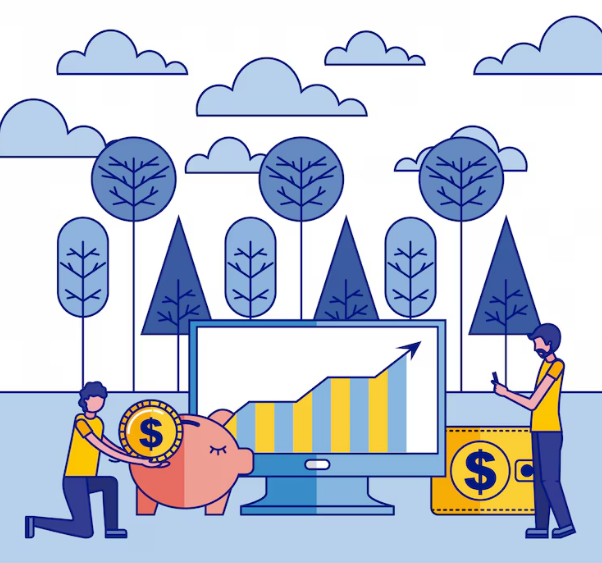The concept of micro-investment has emerged as a groundbreaking method for Americans to accumulate wealth through modest contributions. With the rise of digital platforms and apps, investing is no longer limited to the wealthy or financially savvy. Micro-investing allows individuals to make small-scale contributions, often just a few dollars, aligning with the times where financial inclusion and accessibility are at the forefront.
This approach has empowered many who once felt excluded from traditional investing, creating new opportunities for financial growth and security without the need for significant capital upfront. This article explores the rise of micro-investing in the United States, how it’s changing the investment landscape, and the tools and strategies individuals are using to build a solid financial future. Check now!
The emergence of micro-investing

Micro-investing has gained traction in recent years, acting as a catalyst for broader demographic engagement with the financial markets. This investment approach enables individuals to set aside small sums regularly, breaking the barriers traditionally associated with investing, such as significant start-up capital or extensive knowledge of market intricacies. This model owes much of its popularity to user-friendly applications, which offer intuitive interfaces and minimal fees.
These tools have democratized access to investing, making the process less intimidating and more accessible to people from diverse economic backgrounds. Apps like Acorns, Robinhood, and Stash lead the way, turning spare change into potential wealth and bringing the stock market closer to becoming a household practice. The effect on the economy has been multifaceted, encouraging a culture of saving and investing while bolstering financial literacy.
The democratization of financial markets
Historically, financial markets were perceived as arenas reserved for the affluent and those with substantial knowledge of the stock exchange. The advent of micro-investing has eroded these boundaries, presenting the average citizen with opportunities formerly out of reach. This democratization stands as a testament to the transformative power of technology, allowing vast access to markets at one’s fingertips.
Micro-investment platforms often provide educational resources, nudging users to learn more about investment principles, risk assessment, and market trends. By fostering financial literacy, these platforms equip users with the skills necessary to make informed decisions. They create a more knowledgeable and empowered investor base that can potentially influence market dynamics over time. The spread of micro-investment mirrors a broader societal trend towards greater financial inclusivity.
Psychological benefits and habit formation
While the financial advantages of micro-investing are evident, the psychological benefits are equally significant. Seeing incremental contributions grow encourages a sense of accomplishment and financial responsibility. This experience can change perceptions about investing, making it a less daunting endeavor for many novices. Moreover, the ease and regularity of small contributions facilitated by micro-investing promote positive financial habits.
Regular investment, even with minimal amounts, reinforces budgeting discipline and prioritizes saving over impulsive spending. Gradually, users develop a long-term mindset, as they observe their initial small investments accumulate substantial sums over time. By transforming investment into a habitual practice, micro-investing cultivates a culture of continuous savings and forward planning, ultimately leading to more financially stable individuals who are better prepared for unforeseen expenses and golden-year planning.
The advantages and challenges of micro-investing
The promise of micro-investing lies in its accessibility and potential to diversify portfolios with minimal entry barriers. However, like any financial strategy, it presents both benefits and challenges that merit consideration. The key benefit is undoubtedly accessibility, with the ability to commence investing with negligible amounts. It supports financial inclusion, making stock ownership feasible for individuals with varying income levels.
Additionally, the ability to automate investments makes consistency easier to maintain, reducing the chances of neglecting future financial needs. Yet, challenges persist. Micro-investing may also lead some users to underestimate the significance of understanding investment risks and market fluctuations. Users may develop a false sense of security due to the simplicity of the platform interfaces, potentially overlooking the complex nature of financial planning and the importance of informed decision-making.
Strategies for maximizing micro-investment
To optimize the outcomes of micro-investing, individuals should be proactive about their financial education, leveraging the resources provided by platforms to sharpen their investment acumen. Understanding the basics of diversification and risk-management will facilitate more robust decision-making processes. Another essential strategy is to set clear financial goals.
Users should establish investment objectives, such as preparing for retirement or building an emergency fund, aligning their monthly contributions to these aims. Recognizing the purpose of investing can enhance commitment and discipline over time. Making good use of automatic features can mitigate the risk of missing contributions and help build a sustainable investment habit. These tools can facilitate the accumulation of savings over time with relative ease, adding convenience while ensuring consistency in growing wealth.




